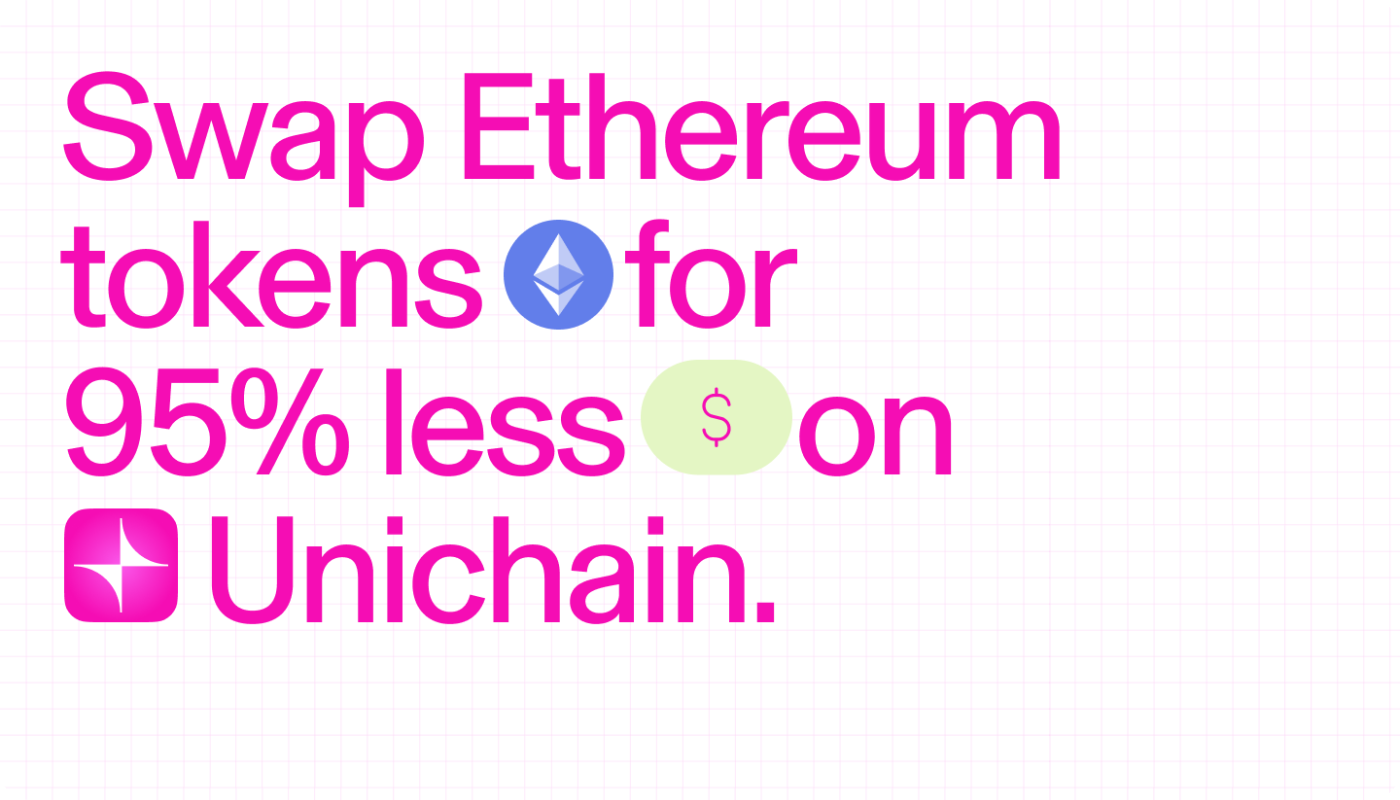BTC Rips Higher


View in Browser
Sponsor: Uniswap Labs — Unichain is live! Bridge & swap with Uniswap Labs' web app or wallet.

- 🟠 Bitcoin Punches Through $109K to New All-Time High. Bitcoin is surging through to new heights, besting its previous high achieved on Jan. 20, Trump's inauguration.
- 🥷 Coinbase Data Breach Impacted 69K User Accounts. In a government filing, the exchange detailed that the total number of users impacted by its recent data theft was 69,461 individuals.
- 📲 Solana Mobile Debuts Plans to Launch SKR Token. The entity behind the Solana smartphone is shipping its next phone this summer, and has plans for a token launch as well.
| Prices as of 5pm ET | 24hr | 7d |

|
Crypto $3.40T | ↗ 1.3% | ↗ 1.8% |

|
BTC $107,822 | ↗ 0.5% | ↗ 4.1% |

|
ETH $2,490 | ↘ 1.2% | ↘ 4.4% |

Over the week, crypto Twitter has been debating a new favorite metric: Real Economic Value, or REV.
Standardized by Blockworks Research, REV tracks how much users pay to use a blockchain — including fees and MEV tips.
Network REV (Real Economic Value) is a standardized metric that tracks blockchain value accrual generated by user activity. REV consists of both in-protocol transaction fees and out-of-protocol tips that users pay for transaction execution, so it measures the monetary demand to transact onchain — Blockworks
The metric has gained traction as a signal of demand for blockspace and a way to understand which chains see real usage — recently highlighting Solana as a home for large economic value creation. But while many agree it's useful, no one's calling it the only metric that matters.
The real debate is more subtle: how much weight should REV carry when valuing a blockchain? Should it be considered a primary signal of value, or just one of many? And is it being misused by those pushing specific narratives?
We dug into the Twitter discourse and pulled out some of the strongest POVs below. 👇
💬 Our Favorite REV Takes
▪️ REV Serves as a Strong Starting Point
DBA Crypto co-founder, Jon Charbonneau, who first wrote about REV as a value framework for L1 and L2 tokens last November, sees it as a useful starting point for valuing blockchains, similar to how revenue helps value stocks in traditional finance.
He emphasizes that while no single number can capture everything, REV provides a concrete starting point that can evolve into more sophisticated valuation models as the market matures.
But what matters isn't just current REV, it’s the quality and sustainability of that REV over time. A chain with consistent, competitive fees from high trading volume might deserve a higher multiple than one with temporary congestion fees (Hyperliquid versus Ethereum, in this example), as it could imply more potential for future earnings.
— Jon Charbonneau 🇺🇸 (@jon_charb) May 18, 2025
▪️ REV Is a Clear, but Incomplete Signal
Our David Hoffman keeps things simple: REV is good — it's just not everything. It shows what users will pay to use a chain, making it a useful measure of demand, even if incomplete.
Recently, there’s been some backlash against REV from the Ethereum community, which, in his view, doesn't make sense. Ethereum's pitch has been that it has the most valuable blockspace. If users pay the most to use Ethereum, that should show up in REV. He finds it odd that some dismiss REV when it aligns with this core narrative.
David offers a framework to explain the different attitudes toward REV. Chains like Solana, which optimize for fast state transitions (frequent transactions), naturally produce higher REV. Ethereum optimizes more for holding state, which doesn't show up in REV the same way.
Yet, once again, he sees REV as a secondary metric, like a simplified version of discounted cash flow (DCF), hinting at future earnings but needing other metrics alongside it. But what should complement REV? That’s still up for discussion, but Ryan’s on it.
The REV debate centers around whether REV should be primary, or secondary, valuation metric for a chain
— David Hoffman (@TrustlessState) May 19, 2025
REV is certainly important, but it should not be a primary metric — nor do I see anyone advocating that
But, we need an alternative metric to compliment REV https://t.co/sUwCMQgJPh
▪️ REV Is Useful, Just Not in the Way You Think
Spire founder Mteam.eth defends REV as useful, not perfect.
His view is practical: the issue isn’t REV itself, but how people misunderstand it. Framing it as “all models are wrong, but some are useful,” he sees REV as one of the useful ones. It’s not revenue, and blockchains aren’t companies — but REV does signal demand for a chain’s services. It shows how much users value blockspace and belongs in a broader valuation toolkit.
Still, it’s no shortcut for valuing blockchains. Solana may generate 2–4x more REV than Ethereum, but that doesn’t mean its token is worth more. Judging a chain by REV alone is like judging a company only by revenue — it ignores profits and growth.
▪️ REV Maximalism Misses the Bigger Picture
Ethereum community member Ryan Berckmans pushes back on the REV hype, saying that while REV may be useful, it's being overstated by some as the core metric to value L1 tokens.
His case is that L1s are confidence assets, like gold or currencies — not companies. Valuation comes from a blend of metrics and beliefs. He also notes that if REV alone mattered, Tron would be worth $290B — which it clearly isn’t.
REV maximalism is bag-pumping BS
— Ryan Berckmans (@ryanberckmans) May 19, 2025
REV by itself isn't the best or even a reasonable way to value an L1 token - not by a long shot.
This season, some crypto folks are pushing aggressive REV maximalism, which is the idea that REV is the "top-line metric of a blockchain" and/or…
▪️ Short-Term REV Doesn't Predict Long-Term Value
Polygon co-founder Brendan Farmer doesn't dismiss REV entirely, but thinks it's often misapplied, especially over short timeframes.
For example, Ethereum once peaked at $21.6B in annualized REV, Solana at $6.6B, yet both have fallen sharply since. If REV strongly predicted long-term value, those peaks would have mapped more clearly to price or activity.
He believes short-term REV mostly reflects how rich users feel, how volatile assets issued on that network are, and how immature their MEV markets still are. You can optimize for REV — but if it kills affordability or user growth, it backfires.
The argument that REV doesn't matter because Bitcoin has no REV is a bad one.
— Brendan Farmer (@_bfarmer) May 19, 2025
But there's a good argument that current REV is a bad proxy for expected future REV (and future aggregate economic value on a chain).
Objectively, we can see this has been true for Ethereum and…
▪️ REV Is a Proxy for Real Onchain GDP
Paradigm co-founder Matt Huang sees the matter of REV through a broader view of blockchain valuation. In his view, the endgame for smart contract platforms is to become real, non-custodial money — like Bitcoin, but programmable. That means not just storing value, but supporting a wide range of financial activity without relying on intermediaries.
From that lens, REV isn’t the target, but a proxy — a way to estimate real onchain GDP. GDP, not token speculation, is what ultimately shows whether these platforms are useful. REV helps approximate GDP by capturing priced activity, which is harder to fake. But it can still be gamed, and optimizing for it too narrowly can backfire.
The key isn’t just the size of a chain’s GDP, but its share relative to others. If ETH or SOL aren’t ultimately monetary — if they don’t become platforms for storing and using value at scale — then Huang argues their long-term value may not hold up. REV helps us measure that trajectory, but it’s not the destination.
How I think about it at least is that smart contract L1s are competing to be "Bitcoin that can be used non-custodially" i.e. "money"
— Matt Huang (@matthuang) May 19, 2025
And what matters is "real onchain GDP" because this demonstrates its utility as a platform for non-custodial finance/etc. GDP is hard to measure…
The Common Ground
There’s more agreement than it seems. No one thinks REV is the only metric. And few think it should be ignored. Those in favor say it captures something real: what people pay to use a chain. Skeptics argue it’s too easy to misuse and can’t stand alone.
The middle ground? REV is helpful — but incomplete. It’s best used alongside other metrics like stablecoin volume, TVL, dev activity, and long-term retention.
In a space as fast-changing as crypto, no single metric will ever be enough. REV is certainly one piece of the puzzle — just don’t confuse it for the full picture.
Want to dig in even deeper to the REV debate? Check out the latest Bankless Roundtable.


Unlock the power of Unichain – a fast, decentralized Ethereum Layer 2 network built to be the home for DeFi and cross-chain liquidity. To bridge tokens to Unichain and start swapping today, get started with Uniswap Labs’ web app or mobile wallet.

In this episode of the Bankless Podcast, the hosts discuss Real Economic Value (REV).
Triggered by Jon's exploration of how ETH and SOL prices correlate with REV, the team delves into REV's role as a value capture metric and demand signal for blockchain networks.
We evaluate the implications for network valuations, debate the sustainability of relying on REV, and analyze competitive dynamics between Ethereum and Solana. The conversation concludes with musings on crypto investment risks and the evolving identity of digital currencies in relation to app utility.
Listen to the full episode👇
